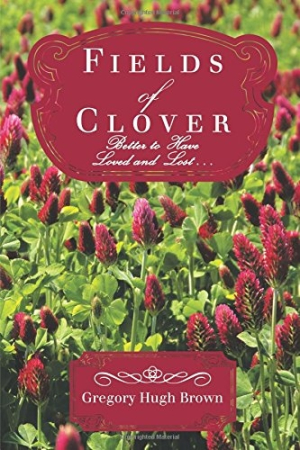
Fields of Clover
Better to Have Loved and Lost
Fields of Clover is a loving story that idealizes a family history and a departed brother; it fascinates in art and genealogy.
A love for both family and history are the cornerstones of Gregory Hugh Brown’s family biography Fields of Clover.
The story begins with the marriage of Clover Palmer and Cora Lee Goodson in 1919 in Hamilton, Alabama. While the couple, the narrator’s grandparents, won’t be found in history books, the narrator has a sense of wonder and awe about the vast set of circumstances that led to their union. As he explores Clover’s and Cora’s ancestry, a fascinating tale that links the Civil War, the Indian Removal Act of 1830, and other moments in American history unfolds before him.
This isn’t just a family history. In the foreword, the author recounts how this book was based on the extensive research that his brother, Roger Brown, conducted. Roger Brown was an artist best known for his award-winning sculpture Autobiography in the Shape of Alabama (Mammyʼs Door). Roger Brown lovingly infused family history into many of his works; his best-known works reference Clover’s grandma, Mammy. Using his brother’s research, Gregory Brown decided to expand the history into this book.
The result is a meticulously detailed tale that not only tracks the migrations, occupations, and marriages of various family members but provides both historical and cultural context for the choices they made. Such choices are brought to life by references to family furniture, lyrics to songs that were handed down, recipes, and photographs. The addition of such artifacts brings Clover and his family to richly detailed life.
There are gaps in Clover’s family history; Brown fills these by imagining the past. Based on his grandfather’s unusual name, he dramatizes a scene where Clover’s parents are overcome by passion in a field of clover and consummate their relationship, begetting their son. Later, Brown imagines Clover in an afterlife where getting to heaven is similar to waiting at the station for a train.
The description and drama of such scenes are well crafted, if more in the vein of historical fiction than a family biography. As it is, the theatricality of such scenes represents an abrupt change within the narrative; they make the work uneven.
A loving story that idealizes a family history and a departed brother, Fields of Clover is a sometimes esoteric work that fascinates in art and genealogy.
Reviewed by
Katerie Prior
Disclosure: This article is not an endorsement, but a review. The publisher of this book provided free copies of the book and paid a small fee to have their book reviewed by a professional reviewer. Foreword Reviews and Clarion Reviews make no guarantee that the publisher will receive a positive review. Foreword Magazine, Inc. is disclosing this in accordance with the Federal Trade Commission’s 16 CFR, Part 255.
